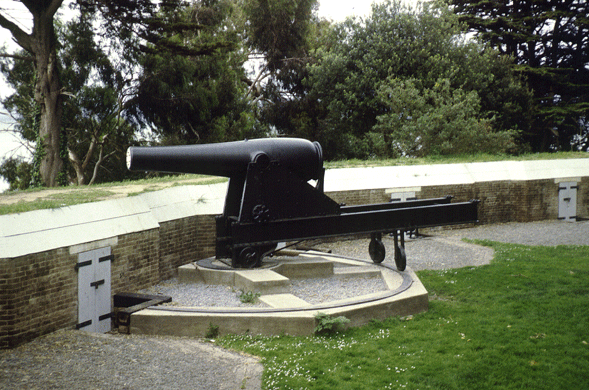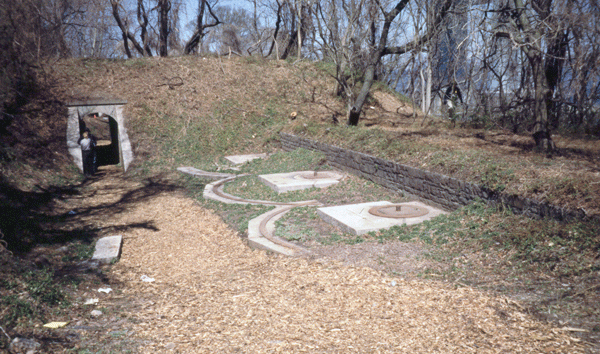U.S. Seacoast Defense 1781-1948: A Brief History

Black Point Battery, a Civil-War era battery in San Francisco, CA (Golden Gate National Recreation Area)
The Civil War Era, 1861-1865
The urgencies of the Civil War required that fortifications be constructed rapidly and at minimal cost. Third-System forts were completed, but new construction was primarily of wood-revetted earthworks. Sometimes these were constructed near a Third-System fort, supplementing the firepower of the fort and sometimes they were stand-alone fortifications. Often, they were constructed to close passageways that had increased in importance during the war. They were, due to the expediency of war, temporary in nature. In addition, the war saw the first use of underwater mines as a planned part of seacoast defenses.
The Post-Civil War Era, 1867-1875
Following the war, several Third-System forts in New England were completed, and southern fort that had been damaged were repaired. Built of stone, and designed to accommodate the large-bore cannon developed during the war, these massive forts would have been formidable works.

An 1870’s-era battery at Fort Wadsworth in New York, NY (Gateway National Recreation Area)
In 1867, however, money for masonry fortifications was cut off and the Third System came to a close. A combination of controversy over the vulnerability of masonry to rifled cannon and large-caliber smoothbore cannon and new developments in heavy artillery led to the construction of masonry-revetted earthen fortifications. During the 1870s, a number of these new works were begun, which were to include large-caliber mortars and submarine mines. While some of the cannon emplacements with their brick-lined magazines were constructed and armed, facilities for the mortars and mines were not completed. Most of the defenses were abandoned by the early 1880s.
Links to Other Periods
Civil War & Post-Civil War (1861-1875)
Early Modern Programs (Endicott & Taft, 1886-1917)
US Coast Defense Sites (1945-Present)
